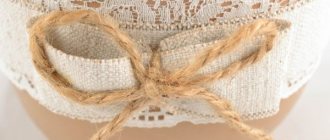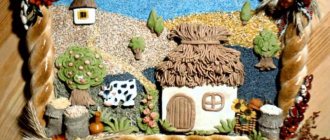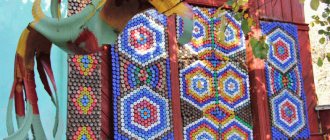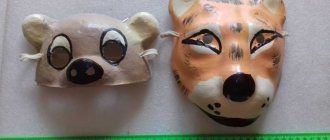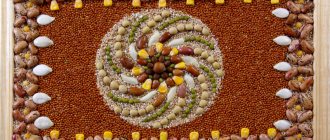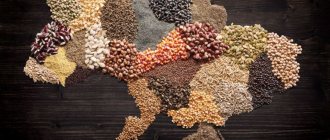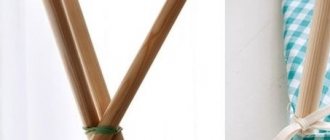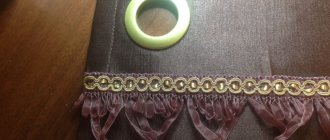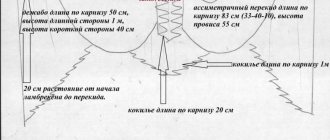Selection of material
The starting point of the step-by-step instructions is how to sculpt from clay - the choice of raw materials.
For creative activities, you can use both natural and artificial materials. To make a choice, you need to know what is best suited for what.
Clay modeling master class for beginners
So, what to make from clay is not a great choice for beginners. Usually everyone stops at animal figures. Prepare your work area in advance. Cover the table with oilcloth, place a container of water on it, and prepare a damp sponge and tool. Then everything is quite simple:
- 1. Take the clay out of the bag and roll it into a rope.
- 2. Pinch off the required number of pieces for animal figurines.
- 3. Knead the resulting pieces with your hands.
- 4. Using both hands, form the base of the figure. Use stacks as needed.
- 5. Make large parts first. Then smaller ones are sculpted.
- 6. To better understand how a particular product should look, it is better to focus on a photograph or picture. There is no need to try to reproduce an exact copy of the animal. It is enough to make the figure in a “cartoon” version. It’s even better to print out photographs of finished clay products from the Internet.
- 7. The well-dried product must be carefully sanded and soaked in PVA glue. After the glue has dried, the figure is painted with acrylic paints or gouache. Instead of glue, you can use acrylic primer.
- 8. It is better to coat the finished product with varnish on top.
We invite you to watch a video where they teach hand modeling from clay.
Clay modeling is an activity that brings not only great pleasure, but also benefits. This activity is especially suitable for children. They develop the ability to work with their hands, they get the opportunity to bring their images and fantasies to life. Products made from handmade clay are also an excellent gift for any occasion.
Natural clay
Produced from rocks, it is purified from all kinds of impurities and does not contain dyes. As a rule, it has one of three colors - blue, red, white:
- Blue color - the material is most used in cosmetology, it contains a large amount of salts;
- Red - clay, which is widely used for the production of ceramics (durable, heat-resistant), after firing it has a brick tint;
- White color is the most popular in creative works; after firing, the products acquire an ivory tint, the paints are applied easily and do not change their colors.
Factory packages come in different weights; it is profitable to buy 15-kilogram briquettes. When applying, it is necessary to maintain the correct proportions of the material with water and sand.
Safety precautions
Polymer clay does not contain the safest substances, but they pose a danger only when heated above a certain temperature. If you follow safety precautions, modeling with polymer clay is no more dangerous than working with plasticine.
- Buy only certified polymer clay from reputable manufacturers.
- Strictly follow the instructions on the package when baking the product.
- Children under 5 years old should not work with plastic.
- Use latex gloves when working with clay.
- All tools and containers used for modeling and baking must not be used for other purposes (especially for contact with food).
- It is forbidden to exceed the recommended temperature when baking - toxic substances are released during combustion.
- After firing, be sure to rinse the oven if you are using it for cooking, or place the products in a closed cooking sleeve.
- Keep the window open while baking the plastic and ventilate the room afterwards.
- Dry the finished craft with open windows or in the fresh air.
If symptoms of poisoning appear (nausea, dizziness, weakness), consult a doctor or hospital.
Artificial clay
It is a polymer and dyes are used in its production. It works like plasticine, and after hardening, products made from it become plastic. There are two options: in one of them, firing is not required, in the other, solidification occurs when heated.
It is easier to work with such raw materials; small figurines and costume jewelry are made well from it. It is available in different colors, and finished products do not require painting. Thus, for clay crafts for children and all beginners, it is better to choose artificial material.
Types of polymer clay
You can find two types of it in stores: self-hardening and baked. From the name it is already clear that the main difference lies in the method of hardening the finished work. There are, however, other differences between these two types.
Self-hardening
When exposed to the open air for several hours, such plastic hardens on its own without external influence. It must be stored exclusively in sealed packaging.
Complete hardening occurs in 24-36 hours (depending on the brand of clay).
Similar clay is produced in various formats:
- Heavy similar to natural. It is very hard and not pliable; to work with it you need to add water. The finished product may crack and the edges will often crumble.
- Lightweight - very flexible and stretches well, it can be quickly rolled out into a thin pancake.
- Liquid – white or transparent gel. It is used to create clothing, and for this purpose it is applied to a piece of fabric, which is placed on the figurine and fixed in the desired position. When it completely hardens, it will become hard like plastic.
- Cold porcelain differs from others in its snow-white color and high plasticity. The finished work can be painted in any color.
For each type of creativity, you can choose your own type of clay.
Advantages:
- Sticky specks and debris can be easily removed from the product;
- good for large elements;
- You can use plain water to soften;
- the product does not need to be baked, which means you can add various additional elements that can melt or burn;
- After completing the work, you can make changes to the product for several more hours until it hardens completely.
Flaws:
- not suitable for small elements, because they can break easily;
- it takes a long time for the work to completely harden;
- during drying, cracks and chips may appear that will need to be covered;
- slight shrinkage after drying, which should be taken into account during sculpting;
- After drying, the color fades so that it differs from the original work.
Working with this type of plastic is not as convenient as with baked plastic.
Baked clay
To harden, you need to send the finished product to the oven. The required temperature is 100-130°C (check the packaging of the specific brand). The finished work is distinguished by its smooth surface and bright colors.
Even the simplest figures look attractive.
Advantages:
- paint adheres well to clay, so you can paint it any color;
- after drying, the colors do not fade and remain the same as originally intended;
- You can create both small and large elements.
Flaws:
- Dust, specks and dirt easily stick to clay, so you need to work on a clean surface and wear gloves;
- Once the finished work is sent to the oven, it will not be possible to make changes to it or correct defects.
It is this type of polymer clay that needlewomen all over the world mainly work with.
What tools are needed
The most necessary equipment that will be required for classes is:
- Blades, knives, molds (for cutting),
- Wet wipes, gloves,
- Plastic board and rolling pin (for rolling out the clay mass),
- Toothpicks, paper clips, needles (for making indentations in products, etc.),
- Stacks,
- Smooth hard surface.
If you plan to bake and paint crafts, you will also need special dishes, paints, and brushes.
Plastic method
Allows you to create things from a single piece of clay.
- Molds and a pottery wheel are used.
- When working with a wheel, the raw material is placed on it and pulled upward, forming the product as it rotates.
Constructive way
Items are created from separately molded parts.
In this case, different methods are used:
- Filigree: Small twisted pieces are placed on a rolled out sheet of clay to create a pretty pattern;
- Rolls: Multi-colored “sausages” are laid in layers, and then rolled and curious patterns are obtained on the cut of the “roll”;
- Textile ceramics: Roll out each of the parts separately, cut out the required shapes using molds, and finally connect everything using a clay solution;
Materials of different colors are mixed, achieving smooth transitions (for artificial clay).
What you need to sculpt jewelry from polymer clay
Features of working with polymer clay when creating jewelry
Polymer clay is one of the best materials for creating jewelry.
Soft and flexible, it is easy to work with, does not stick to your hands, and after heat treatment it becomes hard and durable, it can be sawed, cut, drilled, sanded, painted. Manufacturers produce clay of various colors, as well as clay with effects: translucent, with sparkles and inclusions, glowing in the dark, imitating stones and minerals. All this allows you to realize the most incredible creative ideas.
Which clay to choose for making jewelry
To make jewelry, it is better to choose baked polymer clay, since after firing it becomes durable and does not deform when worn.
To create the effect of enamel, creams on culinary miniatures and to hold parts of jewelry together, use liquid polymer clay or polymer gel, which also hardens when baked.
Self-hardening clay in air is more suitable for sculpting interior figures, flowers and crafts with children.
The most popular brands of polymer clay, most loved by craftsmen specializing in costume jewelry, are Fimo, Cernit, Pardo, Sculpey, Premo Sculpey, Craft&Clay.
Tools for working with polymer clay
Special tools and devices expand the range of possibilities when making jewelry from polymer clay. It is important that they are professional.
To roll out the material, use an acrylic roller or a paste machine. A paste machine has the advantage of allowing you to quickly create a layer of a given thickness that is even around the entire perimeter, as well as create a color transition on the clay.
To cut plastic, special blades are required. Most often they are sold in sets: rigid for even cutting, wavy for curly, and flexible for a curved cutting line.
It is convenient to use figured cutters or cutters to cut out various shapes, for example, if you want to make a decoration in a round, square, rectangular shape or in the form of a letter, number, heart, star, leaf.
An extruder or, more simply, a syringe for polymer clay, as well as various attachments that come with it, allow you to squeeze out even threads of various sections and thicknesses.
You can make beautiful imprints on a layer of clay using texture sheets.
Also, when creating decorations, you may need: stacks, needles or toothpicks.
What surface to sculpt on?
Baking polymer clay
You can sculpt from polymer clay on any smooth surface, the main thing is that it does not stick too much, otherwise the product will be impossible to remove without deforming.
Craftsmen most often use glass, ceramic tiles, foil, and sometimes plain paper, since they can be placed in the oven along with clay.
When the sculpting process is completed, the product must be baked for 15-30 minutes, depending on the size, at the temperature indicated on the polymer clay packaging (110-130C). It is important not to exceed the firing temperature, otherwise the work will be ruined.
You can use an oven thermometer to control the temperature.
You can purchase a small electric oven or bake the clay in a regular oven. After use, the oven must be washed, since during firing the plasticizer evaporates from the clay and settles on the walls. For the same reason, the room where the stove is located should be well ventilated.
When the product has cooled, you can begin further processing.
Finishing of the product: sanding and varnishing
Most beginners forget about this processing step, such as grinding. This is necessary to level the surface of the product, rid it of lint and fingerprints.
Sanding can be done using any rotating tool with an abrasive attachment, or manually with waterproof sandpaper. In the first case, it is advisable to use a respirator to avoid breathing dust.
When sanding with paper, it is easier to control the thickness of the layer being removed, and if you moisten it with water, polymer dust will not fly around.
The next stage is varnishing to give the product shine and additional strength. Only polymer clay varnish is suitable for this. After application, the varnish should dry well.
Assembling jewelry
Without accessories it is impossible to assemble most jewelry. Most often, when assembling, they use earrings, pins, clasps, rings, chains, jewelry cable, bases for rings and brooches.
For assembly you will need the following tools: pliers, thin nose pliers, side cutters, thin round nose pliers.
When assembling, it may be necessary to drill holes in the workpieces; for this you will need a hand drill.
When you have all the materials and tools at hand, you can get to work. At first, when you don’t yet have your own experience, it is better to sculpt, guided by master classes. Over time, you will be able to become the author of your own unique jewelry.
Master class “Earrings using the Mokume gane technique made of polymer clay”
Master class “Earrings using the Hidden Magic technique made of polymer clay”
Master class “Earrings and pendant using the Mika Shift technique made of polymer clay”
Master class “Pendant and earrings using the “Floral Filigree” technique made of polymer clay”
Master class “Bracelet and earrings using extruder technology from polymer clay”
Master class “Bracelet and earrings using the Bargello technique made of polymer clay”
Master class “Beads and earrings using the Watercolor technique from polymer clay”
Master class “Bracelet and earrings using polymer clay using salt technique”
Master class “Hair clip using the “Torn edge” technique made of polymer clay”
Master class “Beads and earrings made of polymer clay using the Millefiori technique from polymer clay”
Master class “Tangerine earrings made of translucent polymer clay”
Master class “Bracelet using extruder technology from polymer clay”
Master class “Pendant made from leftover polymer clay”
Master class “Bracelet using the “Imitation knitting” technique made of polymer clay”
How to burn
Without an explanation of the firing process, a master class on creating clay crafts will not be complete.
In order to begin this process, the figurine must be completely dry. It may take from several hours to two days.
- Firing is carried out using a barbecue. The product is placed in a tin can and placed in the grill (for eight hours): so that it is in the middle of the fire. As long as the sound during firing remains dull, the product is not yet ready.
- Crafts made from artificial raw materials can be fired in the oven for an hour or two (by initially heating it to two hundred degrees, and then setting the temperature to one hundred and eighty degrees).
How to learn to sculpt from plastic
First of all, you need to get acquainted with the basic techniques that are used when sculpting from polymer clay. It is advisable to simultaneously train on a small piece of plastic or at least plasticine in order to immediately consolidate the information.
Basic sculpting techniques
When interacting with clay, only five basic techniques are used:
- Kneading. Before work, the clay needs to be kneaded well with your fingers so that it becomes more plastic and pliable.
- Pinching off. Using your thumb and forefinger, pinch the clay and tear off a small piece to work with.
- Rolling up. A small piece of plastic is rolled into a ball in a circular motion between the palms. Many elements are created from a spherical shape, so this technique will come in handy.
- Smoothing. Use your fingertips to smooth out uneven edges, smeared areas and other imperfect details.
- Connecting parts . Large products require many elements, each of which is created separately. Finally, they are connected using strong pressure and smoothing. You need to act carefully so as not to deform the work. If the elements are large, you need to connect them with glue, which will be discussed later.
These basic elements are enough to get started. Over time, you will be able to complicate them and develop them, and learn new techniques for interacting with clay. But in the first steps you should not complicate the learning process.
Polymer clay sculpting techniques
There are many different sculpting techniques, and over time more and more new ones appear. Let's look at some of the most interesting ones that may be useful to you.
1. Solyanaya
Make a small clay bead and roll it in salt. Press the crystals in carefully. Create as many beads as you need. Bake the beads with salt and then put them in water. Keep it there until the salt crystals dissolve. You will get an unusual texture, reminiscent of pumice or a sponge.
2. Millefiori
Sometimes it is called "cane" or "sausage". The technique is complex and painstaking, but the result is worth the effort.
Roll out the clay into a thin layer, place thin strips of other colors on top, and roll it up. After cutting the roll, you will see the original design, which will depend on the colors used and the arrangement of the elements.
A beautiful example of using the millefiori technique can be seen below.
3. Filigree
Imitates fine jewelry technology with the same name. To create thin patterns, you either need to roll out the clay into thin strips yourself, or use an extruder to create equal strips no thicker than 1 mm. You need to lay out a beautiful pattern from them.
4. Watercolor
Based on smooth transitions between different bright colors. To complete this you need to take three pieces of different colors: the main one, the basic light one and the basic dark one. Works that use contrasting colors (blue - pink) look beautiful.
Place the layers on top of each other (colored first, light on top and then dark). Carefully roll the layers until they become one, and in the process beautiful watercolor transitions between different colors are formed.
5. Mokume Gane
Similar to watercolor, but done a little differently. To work, you will need 3-6 thin layers of different colors. They need to be placed on top of each other and the edges trimmed so that they are all the same size.
Roll out thoroughly with a rolling pin so that excess air comes out and the layers fit snugly against each other. After this, you need to stamp them well, pressing hard so that the layers mix during the process. The chosen pattern and tools are not so important, so you can use any tools: toothpicks, molds, ruler, etc.
At the end, when the entire top surface is covered with stamps, use a thin blade to remove thin layers one by one. Each will have its own unique color pattern.
An example of execution can be seen below.
The most famous and popular techniques are listed above, but in fact there are many more of them. Over time, you can discover new techniques and use them in your creativity.
Gluing parts
Many polymer clay products are made up of several small pieces that need to be put together. For this, special glue is used - latex or epoxy.
Masters prefer latex, because... it is transparent and cannot be seen in the finished work.
Epoxy gives a yellow tint, which is clearly visible on white clay.
Beginning craftsmen should choose glue that hardens in at least 10-15 seconds, and not instantly. This will give you time to make adjustments to the product.
The gluing process consists of several stages:
- Degrease the joints.
- Using a toothpick, silicone brush or spatula, apply a small amount of glue to the desired point.
- Connect the elements and hold for as long as recommended on the glue packaging.
- Carefully place the finished work and do not touch it until completely dry.
You need to work with gloves in a well-ventilated area.
Baking the finished work
At home, a conventional oven is most often used. A microwave oven, slow cooker or grill is not suitable because... It is very difficult to regulate the temperature on them.
Polymer clay is baked at a temperature of 100 to 160°C (see instructions).
Be sure to check the specific temperature in the instructions for the clay - each manufacturer has its own requirements.
The baking process is quite simple, but it may seem difficult the first time:
- Turn on the oven so that it has time to heat up to the desired temperature. Strictly adhere to the temperature recommended by the manufacturer on the packaging - it is the most accurate.
- Place the finished product on the baking surface. A tile, baking tray or glass will do. Place parchment under the work to prevent the work from burning.
- Make sure the desired oven temperature has been reached and place the item inside.
- Keep track of the time and turn off the oven on time. The duration of frying depends on the thickness of the product - on average 20 minutes per 6 mm. The strength of the finished craft depends on the duration of baking. If it overheats, it will dry out, crack, lose shape or burn.
- Be careful - the clay is very hot and elastic immediately after “cooking” is completed. Hardening after cooling. It makes sense not to touch it and not take it out of the oven until it has cooled down.
During baking, polymer clay releases harmful substances that settle on the oven. If you use the oven for cooking, be sure to clean it after baking. Or you can place the product with the stand in a cooking sleeve, tie it, and throw it away. Then you won’t have to clean the oven every time.
Toxic fumes in the air are not enough to cause human poisoning, but just in case, leave a window open when baking something with polymer clay.
For those who don't have an oven, you can use boiling rather than baking. The finished work is not so durable, and a coating forms on it, which must be cleaned off, but in a hopeless situation it can be used.
Cooking time is calculated by the formula: 3 minutes + 1 minute per 1 mm of product. For example, if the thickness of the figure is 1 cm, it comes out to 10 mm * 1 minute = 10 minutes + 3 minutes = 13 minutes. It is impossible to digest the product.
Cooking is not suitable for products that use glue or liquid clay.
Grinding
They will come in handy if, after baking, you notice unevenness, roughness or fingerprints on the product.
For sanding, use sandpaper with a grit of 600, 800, 1000, 1250. Use coarse grits first and move on to fine grits.
Can be replaced with a four-sided sanding file.
Varnishing
The finished product can be varnished to make it smooth and shiny. Not all types of work need to be varnished, but it is often used for decoration.
Before applying varnish, the product must be degreased. It is enough to wash it with soapy water: soap your hands, rub the product and place it in a strainer or other container. Then, without contacting the plastic product with your hands, rinse it from soap.
Do not use acetone, gasoline, alcohol or other aggressive liquids.
Further actions should be performed with thin latex gloves so that fat from the sebaceous glands does not get on the figure.
Varnish will allow your work to be better preserved.
Construction wood varnish is suitable for varnishing. The ideal option is a transparent water-based polyurethane-acrylic. It dries quickly, after which a dense and invisible coating is formed on the product.
Do not use hair or nail spray - they are not suitable!
You can apply the glue using a brush with synthetic bristles. It is advisable to apply two layers of varnish. The second is applied after the first has completely dried.
What to make
As a rule, ideas for clay crafts come to mind on their own. The scope for creativity is unusually wide.
- Figures of animals, fish and birds, trees and flowers, fruits, vegetables and berries, beads, pendants and horseshoes, dishes, fairy-tale characters!..
- For initial experience, as well as to reinforce the material, here is an example of making a “Christmas tree” toy (with which, say, you can decorate a real furry forest beauty).
Clay “Christmas tree”
Such a toy is made using the filigree technique described above from artificial clay.
- First you need to purchase polymer clay of different shades.
- The main color is light green.
- You will also need some material in brown, yellow, red, blue and white.
- Prepare a work surface, wet wipes, toothpicks, and a knife.
After this, they begin the craft.
- Roll out the flatbread with a rolling pin and cut out a triangle shape with a knife.
- The trunk of the tree must be made brown and carefully connected to the tree.
- And decorate it with red, blue and yellow clay balls and a strip of “snow” made of white clay; press a little.
- Before firing the sculpted toy, use a toothpick to make a small hole so that the craft can be hung on a thread.
In general, Christmas trees (as can be seen in the photo of clay crafts) can be of many different types: flat and three-dimensional, of different colors and with patterns that are different from each other, using different techniques.
Mica Shift (mica-shift)
A technique that requires working with metallized polymer clay that contains mica. The plastic is rolled out and an extruded pattern is made on the workpiece using a stamp.
Then the upper part of the pattern is cut off so that the texture remains and baked. In the process, mica particles are displaced, forming a three-dimensional pattern.
Many craftsmen like to mix different techniques, making handicrafts from polymer clay with their own hands. As a result, amazing works come out that can be called masterpieces.
Family hobby
This activity can be a great family hobby. When teaching children how to sculpt, your time together will be interesting and useful.
This is a great chance to give children your love and at the same time introduce them to creativity, reveal their abilities and talents.
And at the same time, through joint efforts, create objects that will then delight everyone at home.
